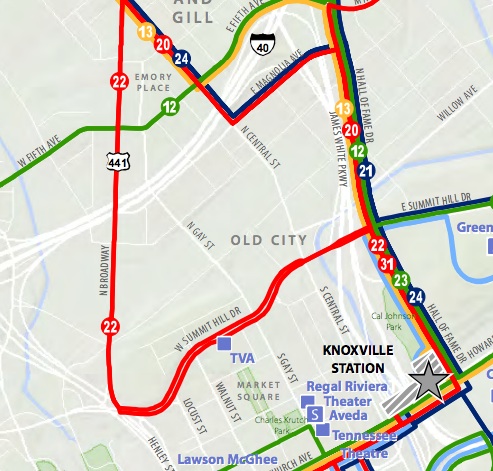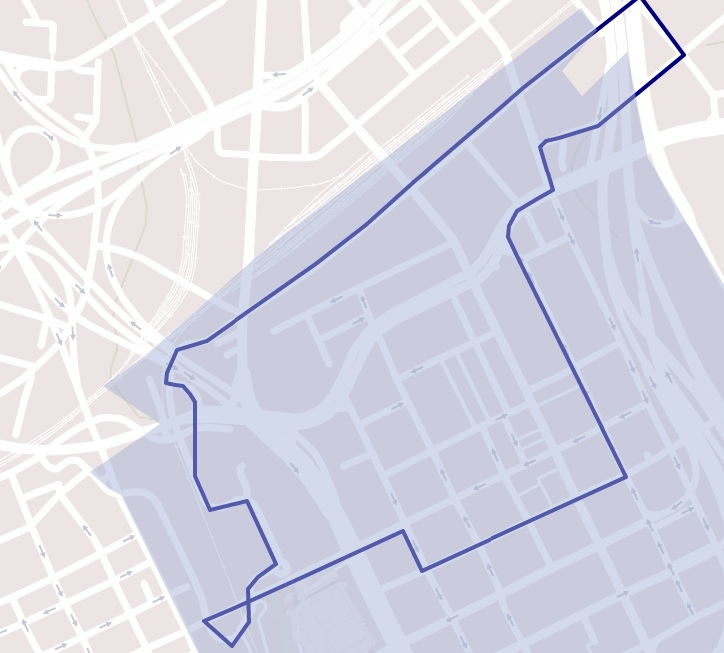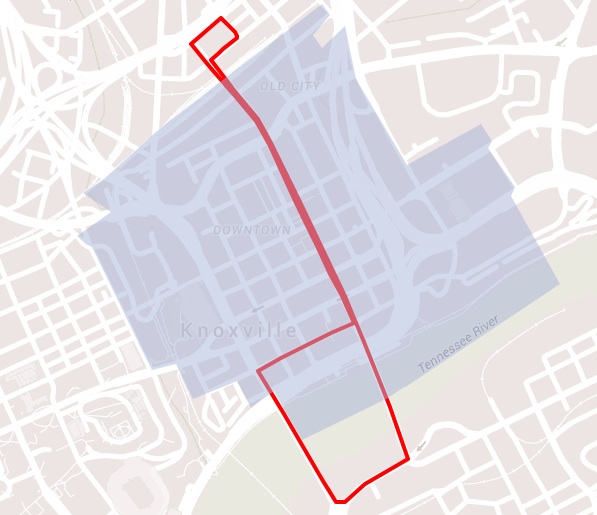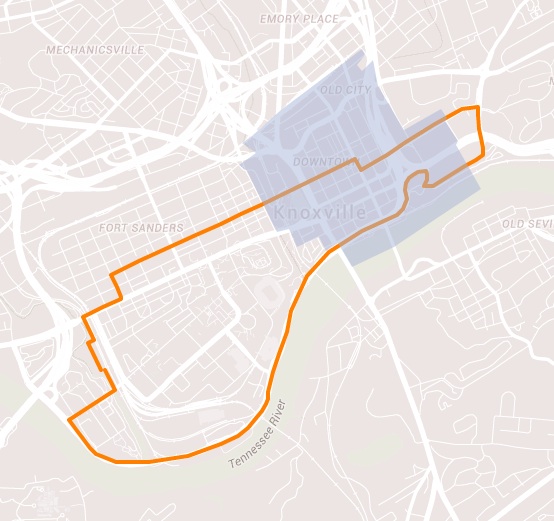A city in the Netherlands is trying out what might be the most Dutch plan yet conceived: a bike path made of recycled wood. The first of its kind in the world, the proposed path near the city of Emmen would be surfaced not with the usual asphalt or tarmac but with paving slabs formed from wood chips packed together with organic resin. To give the path an even daintier carbon footprint, it will be lit with eco-dynamic LED lighting made with bio-composite that lights brightly only when passing riders trigger sensors.
Monday, January 25, 2016
The Dutch Are Building an Eco-Friendly Bike Lane Out of Recycled Wood Chips - CityLab
The Dutch Are Building an Eco-Friendly Bike Lane Out of Recycled Wood Chips - CityLab:
Thursday, January 21, 2016
Feedback on Proposed Downtown Trolley Changes
Belinda,




Please find my reaction to proposed changes in the online document, which I have also copied and pasted into this e-mail below:
There's no CBID Police.
Strict adherence to Central Business Improvement District (CBID) boundaries fails to support business improvements on the periphery that both complement and strengthen the overall CBID.
Further, reluctance to stray from the confines of the district actually precludes service to destinations and residences on the periphery of the CBID, such as The Foundry (Restaurant), The International (Music Venus), Southeastern Glass Lofts, Maplehurst Park.
Further, reluctance to stray from the confines of the district actually precludes service to destinations and residences on the periphery of the CBID, such as The Foundry (Restaurant), The International (Music Venus), Southeastern Glass Lofts, Maplehurst Park.
While the CBID boundary is a helpful guide, it is not an electric fence. Treating it as a rigid boundary limits the effectiveness of KAT in supporting economic development goals of the CBID.
KAT should show a bit less temerity here: the goal of the CBID is clearly to improve business.
KAT garnered an abundance of public comments supporting service beyond the current CBID boundary; yet, the changes proposed actually *contract* the existing served areas, the least justifiable of which is the shortening of the existing Gay Street route.
Why's KAT Not Complementing City efforts on incentivizing N. Gay Development?
Contraction of the existing Gay Street route overlooks recent and ongoing public and private investment and "livable city" amenities, simply because those amenities literally fall on the "wrong side" of the tracks; namely:
- Public House
- Tenn. Valley Bicycles
- Marie's Old Towne Tavern
- Greyhound Bus Station
- Theatre Knoxville Downtown
- Blue Sip Winery / Events Center
- White Lily Flats (lofts)
- Rocky Top Cross Fit Studios
- Regas redevelopment (retail / residential)
- City Surface Parking Lot under I-40
- City Surface Parking Lot at Jackson Ave. & Gay St.
The businesses listed above aren't served by an existing KAT route linking downtown, despite contributing to a a cohesive "center city" business and residential experience.
They're the kind of investments in the center city the CBID was designed to inspire. Referencing the map of the standard KAT system, there's a large service gap in this area of town. The argument that the area is well-served by existing routes falls on its face.
Why No East-West oriented Old City Route via Jackson?
Lumping two areas of interest into one route fails to support a cohesive transit experience, a contributing element in the wayfinding and placemaking experience.
In the current proposal offered, Jackson Avenue is not being served in its entirety, even though it is entirely within the CBID and is regarded as a re-development "success story."
If the planned demolition / rebuilding of the Jackson Avenue ramps is a limiting factor, can you not fit a trolley *under* the Gay Street Viaduct (not even one-way), serving a city parking lot while also bypassing the ramps altogether?
Can you then not continue on to West Jackson Avenue, serving galleries, award winning restaurants, Southeastern Glass Lofts, a new brew pub, and then cross Broadway on World's Fair Drive to access The Foundary, World's Fair Park / KMA / Convention Center / Sunsphere / Chocolate Factory Lofts?
On the return route, parallel Gay Street on State Street, connecting even more garages with the Old City, cruising past Marble Alley Lofts, State Street Garage, and the municipal garage behind Mast General.
Gay Street Should Intersect, Not Combine with Old City Route
Gay Street is a special, uniquely "Knoxville" experience and should have its own line, complementing a generally east-to-west orientation of a separate "Old City" route
10 blocks of Gay Street earned Knoxville recognition for "2012's Top 10 Great Streets" by American Planning Association (APA). Trolleys were mentioned as a contributing milestone of great planning. Let's continue that great planning by recognizing and rewarding the momentous growth at both ends of Gay Street with Trolley service.
Failing to include the South Riverfront at this time will only force a repeat planning process with more maps, public meetings, and input. Let's be proactive.
Vol Trolley East-West Route Should Be Expanded, Not Shortened.
Your proposed change to the Vol Trolley cuts the service area without first seeking out efficiencies. It makes sense that the Vol Trolley would be the largest route, as it links two high-density communities: downtown Knoxville and the University.
Dropping the cross town connection doesn't really address underlying problems of congestion and geographic distribution of the busses.
First: why is KAT serving the congested heart of UT Campus at all? Your vehicles will inevitably jammed up behind northbound First Transit buses at Volunteer Blvd. and Cumberland Ave for the simple reason that First Transit busses cannot (as a policy of First Transit) make a right on red. This is First Transit's weakness and should not be KAT's as a consequence of redundant service areas.
UT students, staff, and faculty already have service in the campus core. It is a better use of city resources to serve areas not already serviced by First Transit.
I also realize Cumberland is congested, particularly with construction work. Can you not simply avoid the heart of UT campus, taking the existing Trolley "snow route" along Clinch, parallel to and just North of Cumberland? Note that Clinch borders the North side of UT's "institutional zone," thereby fulfilling the Trolley ordinance's mandate to serve UT community.
Surely this routing would avoid some of the traffic issues encountered along Volunteer Blvd., as well as those created by Cumberland Avenue construction, until Cumberland is once again available for use (I assume Cumberland is your preferred route to University Commons).
It makes sense to me to connect the periphery of the UT Institutional Zone, and to connect campus to major outlying parking areas for "Game Day" destinations on Neyland such as Neyland Stadium, Thompson-Boling Arena, Boathouse Grill, Calhouns, the Vol Navy docks, and Second Creek Greenway and Volunteer Landing. I imagine ridership would boom on game days.
While it's true this'd be a "mammoth" route, the fact is, UT is a "mammoth" community. "Serving the UT Community" is not a short order and should not be short-changed.
First Transit already takes advantage of Neyland with "Neyland Express," albeit absent any stops between the UT Ag Campus and Thompson-Boling Arena. Adding stops on a KAT route would fill a service gap.
Finally, lumping the existing "Downtown Loop" and existing "Gay Street Line" with service to Gay Street fails to capitalize on the "placemaking" ability of transit lines.
A simple North-South and East-West transit in the center city, with a cross-town "Vol Line" groups the service areas into unique geographic service areas with a center intersecting hub, illustrated below:
Thanks,
Tanner Jessel
4th District Greenways Commission Rep.
2015 Parkridge Community Organization Board Member
On Wed, Jan 20, 2016 at 3:57 PM, Belinda Woodiel-Brill <bbrill@katbus.com> wrote:
Hello trolley plan participants –We've got a few themes emerging from our comments that we thought might benefit from some further explanation. The link below is to a new blog post.Also remember: the other public open house for the trolley plan is tomorrow (Thursday) from 4pm-6pm at Knoxville Station's community room. Thanks as always for your interest in our trolley system.Belinda Woodiel-BrillDirector of Communications and Service DevelopmentKnoxville Area Transit301 Church AvenueKnoxville, TN 37915
Subscribe to:
Posts (Atom)